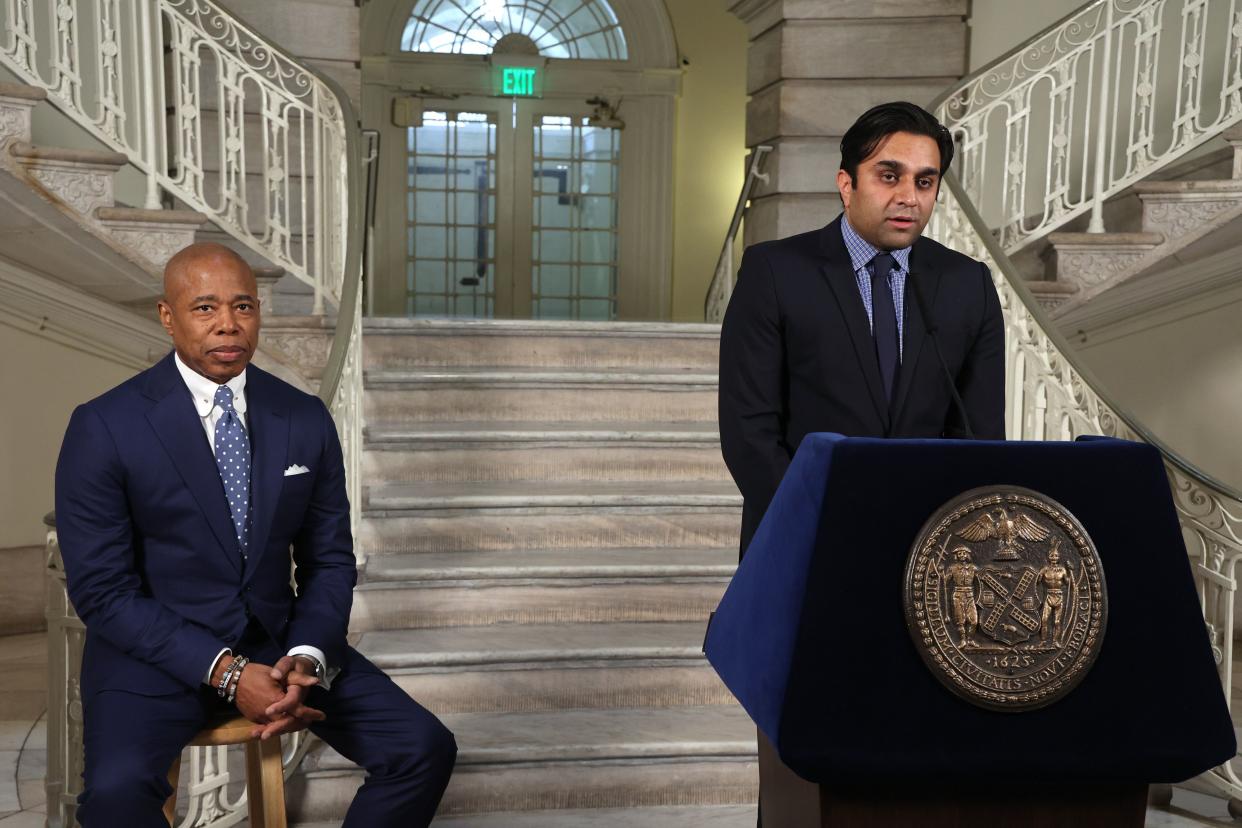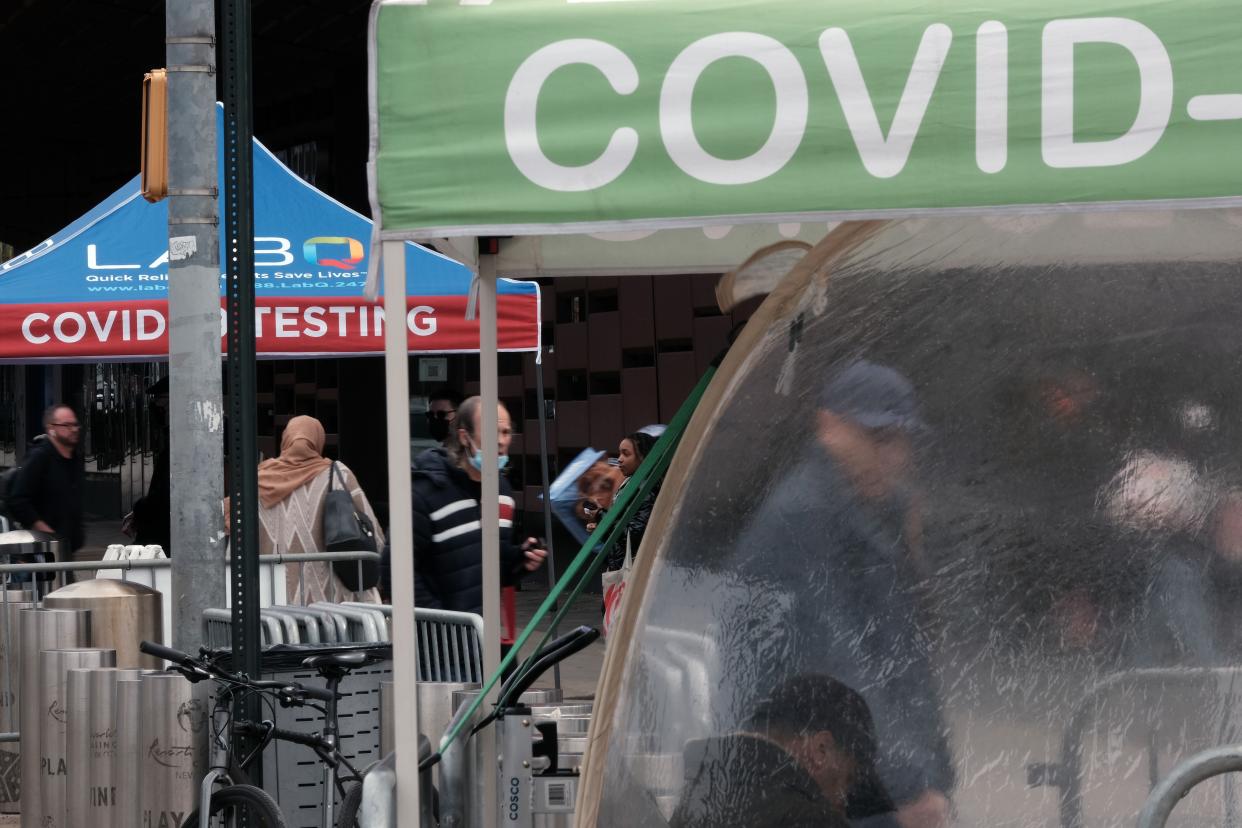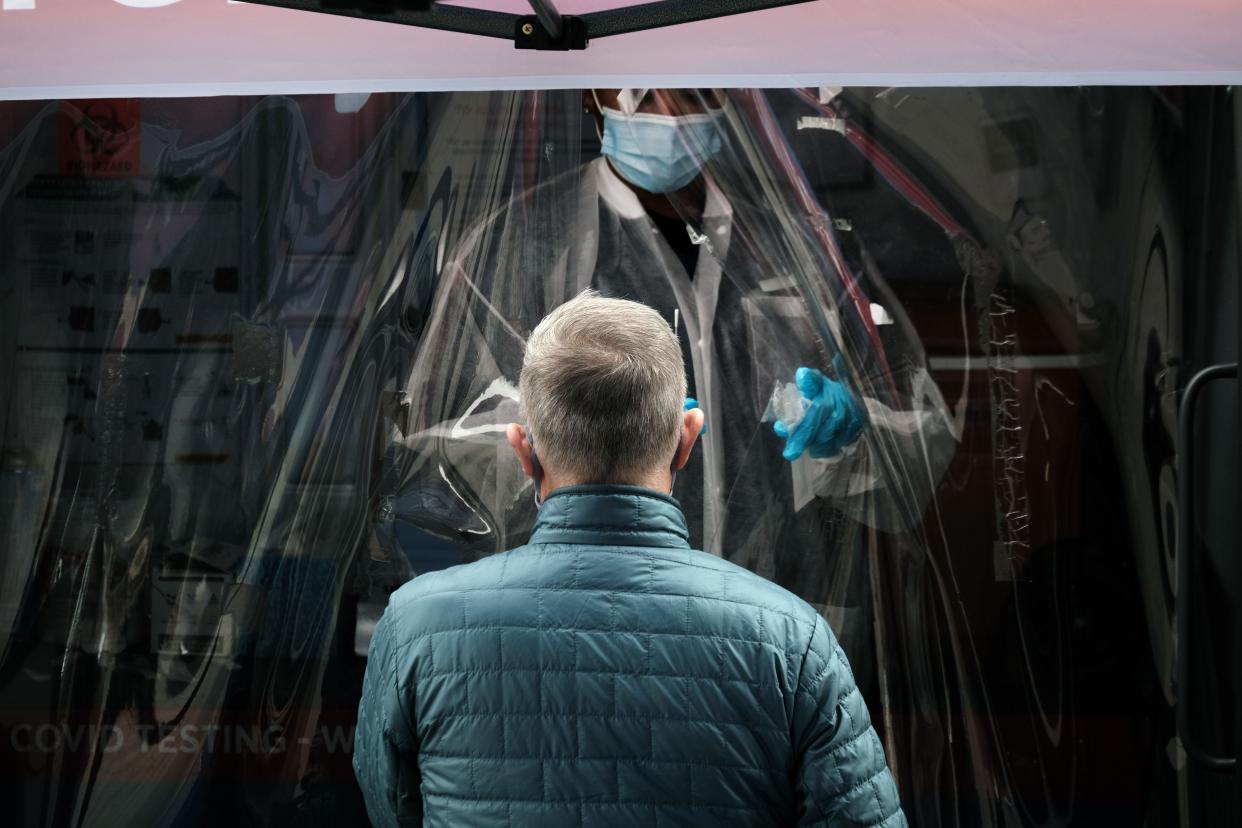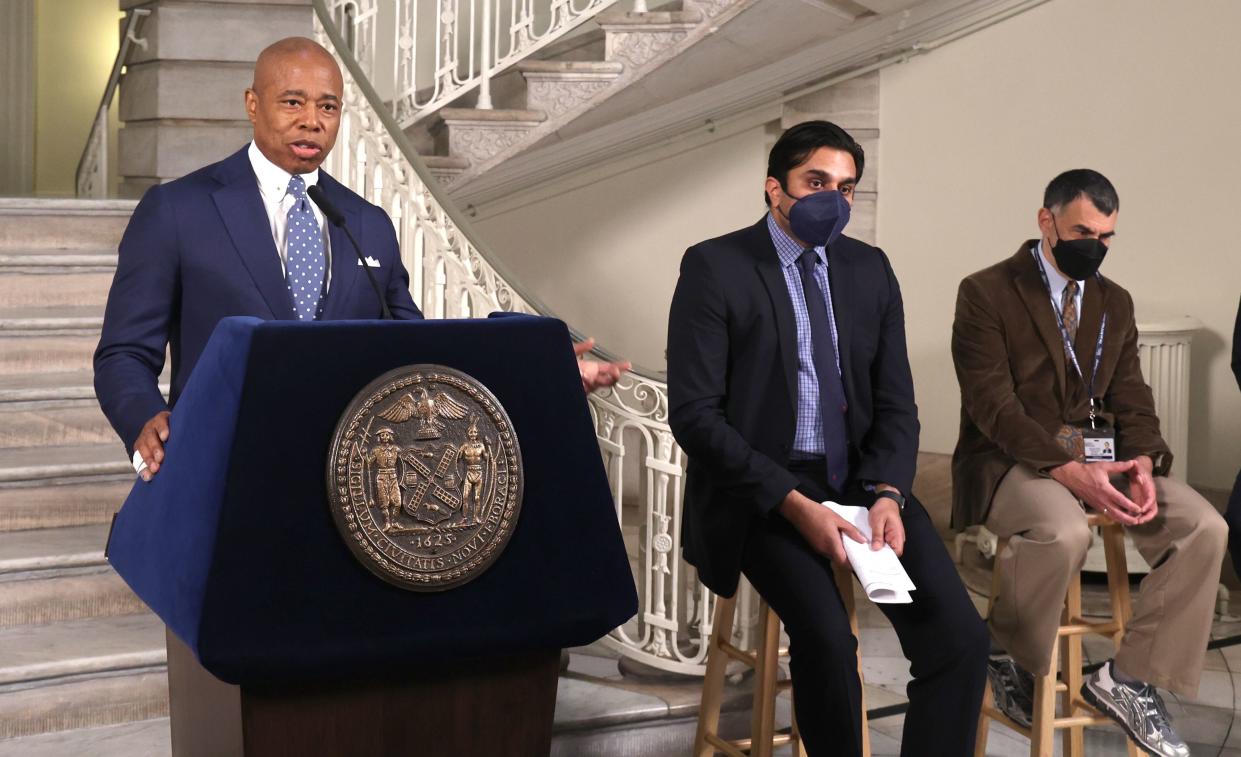NYC enters ‘medium risk alert level’ as COVID cases climb
Mayor Adams declared Monday that he’s not reinstating the city’s mask mandate for public school students, or vaccination requirements for indoor activities like dining — despite the fact that his health commissioner upgraded the city’s COVID alert status earlier in the day.
“We’re not there yet,” he told reporters at an afternoon press conference in Brooklyn.
Adams said that the number of recent hospitalizations and deaths caused by COVID were still at manageable levels, but he did not close the door on the possibility of reverting to policies like requiring kids to wear masks in schools or for restaurant patrons to show proof of vaccination before entering an establishment.
“We’re going to pivot and shift and be honest with New Yorkers as we move forward,” said Adams. “Based on whatever the analysis with the medical team, we are going to make the decision to keep our city up and operating ... We can’t close down the city again. We make the right decisions, we’re not going to have to worry about doing that.”

Earlier in the day, Adams’ Health Commissioner Ashwin Vasan announced that the city has elevated its COVID threat level to a “medium risk alert” due to a recent increase in cases.
It’s the first time Adams’ administration has upgraded the COVID threat level since he took control of City Hall on Jan. 1.
Prior to Monday, the city was on “low risk alert.”
“Cases have now surpassed a rate of 200 per 100,000 people in the five boroughs. As a practical matter, what this means for New Yorkers is that they must exercise even greater caution than they have the last few weeks,” Vasan said in a written statement issued Monday. “If you are at a higher risk for severe disease due to age, underlying health conditions or because you are unvaccinated, consider additional precautions such as avoiding crowded indoor gatherings.”

According to the most recent data put out by the city, the number of new cases per 100,000 people counted over the past week reached 209 as of April 29. New hospital admissions stand at 6.7 per 100,000 people, and the percentage of in-patient beds occupied by COVID patients is now 2.89%. All of those measures are increasing.
In early April, Vasan said he expected to raise the city’s COVID threat level in the coming days, but the city stopped short of that at the time, with Adams noting that he and city health officials were weighing the data.
Days later, the mayor was sidelined — and had to quarantine — after testing positive for COVID. He ended that quarantine on April 18, and on Saturday night, he attended the Inner Circle gala at the Ziegfeld Ballroom along with hundreds of politicos, lobbyists and journalists, most of whom did not wear masks.
On Monday, Vasan recommended that New Yorkers do pretty much the opposite.
“We continue to strongly recommend all New Yorkers wear a mask in public indoor settings,” he said in his written statement. “The coming weeks will be critical to slowing the spread of COVID-19 and getting back to a low risk level so we can more safely enjoy our spring. And remember, the steps you take to protect yourself also protect others, especially those most vulnerable.”

Adams did not wear a mask at Monday’s press conference, which was outdoors, but Vasan did.
The city’s guidance on wearing masks is slightly more forceful under the medium alert level compared with the low alert level.
Under the medium alert, the city recommends that New Yorkers “wear a face mask in public indoor settings where vaccine status is not known.” Under the low alert, it recommends that residents “consider” wearing a mask at indoor public settings.
Under the medium alert rubric, the city also recommends that people who are unvaccinated, at high risk for severe COVID-19 illness, or interacting with high-risk individuals “take additional precautions” such as avoiding crowded indoor and outdoor settings.
On the government side, the medium alert level recommends that Adams consider reinstating the school mask mandate and the Key2NYC vaccine requirement for indoor activities — precautions that the mayor rolled back earlier this year when case rates were dropping.

Manhattan Borough President Mark Levine, who previously served as chairman of the City Council’s Health Committee, said he agrees with the mayor on not bringing back the Key2NYC program or the school mask mandate for now.
“Because hospitalization rates remain low, I think this should serve as a reminder for the public to increase the level of caution they are exercising, but I don’t think we need more restrictions at this point,” he said. “The public should understand that those measures could still be on the table though, depending on how this develops.”
Rather than reinstating restrictions, Levine said the city needs to do a much better job at administering booster shots.
“We’re currently at 37% of New Yorkers boosted, and that’s basically flat since the beginning of the year, so no progress there,” he said. “We have a lot of work to do there, and I think we need to work harder on stronger messaging and a citywide campaign to increase booster rates.”
Levine suggested bringing back the $100 cash bonus for booster recipients — a policy introduced under former Mayor Bill de Blasio that is no longer in effect.
He also outlined a proposal under which the city would automatically sign up people who got their first two shots for booster appointments and then send them postcards in the mail notifying them.
“These are not anti-vaxxers, these are people who just haven’t gotten around to it,” Levine said, adding that about 3.4 million city residents fall into that category. “We can reach those people, and we should be communicating with them directly.”
